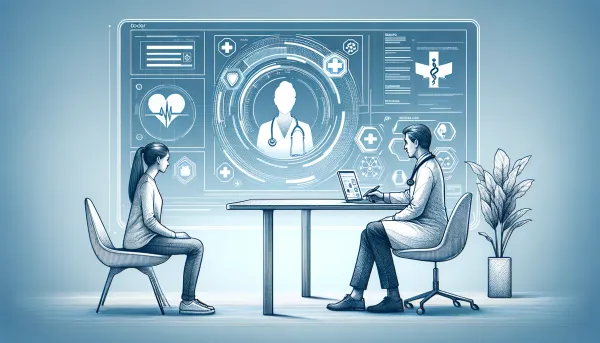Nazi Atlas, Hearing App, Precision Medicine, Metabolomics and Mutations
A Nazi atlas still in use, an app to improve hearing, precision medicine in cancer treatment, cyclists' metabolomics and coronavirus mutations.

The 11th issue of the Sunday MashUp brings some changes. A simpler design, a dedicated logo (and a website in the works).
This one includes some medical treatment connected with history, an app that tracks and improves hearing health, precision medicine in cancer treatment, metabolomics of professional cyclists and how coronavirus mutated.
History
An article told the story that has quite some twist to it. It’s about a Jewish patient, Mr. Musai, who stepped on a land mine in 2002. He was treated by a Palestinian surgeon, Dr. el-Haj, who used a Nazi anatomical atlas to treat him. It sounds like a joke, but it’s true.
Despite the well-known historical background, the patient and his parents decided to allow Dr. el-Haj to use the atlas during surgery. The atlas is called “Atlas of Topographic and Applied Human Anatomy”. It’s especially famed for its accuracy of the peripheral nerve pathways. It was written by Eduard Pernkopf, who was a member of the Nazi party. The people, whose bodies were used to create astounding images are unknown. Most of them, however, probably come from death camps or were political prisoners. In the 1990s there was also a wide-ranging public debate whether it was ethical to use it in practice. Elsevier holds the copyright but doesn’t print it anymore. It is on Amazon for about $1500, though.
This unlikely story in the article concludes with:
“It sounds like a good joke,” Mr. Musai said. “The Muslim surgeon with the Nazi atlas operating on a Jew.”
The lives of Dr. el-Haj and Mr. Musai have since become intertwined.
Mr. Musai has visited the doctor’s family in his village. And when Dr. el-Haj’s mother was hospitalized at Hadassah, Mr. Musai, who now works as a guide there, visited her. Dr. el-Haj has taken his children to visit the Musais in their West Bank settlement, too.
Dr. el-Haj said he had used the atlas in about 90 percent of his operations, always explaining its background to the patients.
“No patient has ever refused,” he said. “Not ever. Because these people can make a pact with the devil to get out of their pain.”
Tech
Oto is the first mobile app to combine hearing health tracking and digital therapeutics for hearing loss and tinnitus. Users can see how their tinnitus and hearing are changing whilst getting access to personalised treatment. I think the idea is awesome. "We're a team of doctors and scientists who are passionate about using technology to improve the lives of people with hearing loss and tinnitus. We strongly believe that our app, Oto, will empower users to gain a better understanding of their condition whilst improving access to treatments that are often expensive and difficult to access." says Edmund Farrar, Oto’s co-founder.
Precision medicine
Because cancer mutations are so specific for every human being, a lot of research is geared towards developing precision treatments. Nature Medicine highlights a study that identified more than 1800 US patients with pancreatic cancer and determined their mutations. All in all, they found 46 mutations and gave each patient a relevant and tailored therapy. The conclusion is that those who received tailored therapy survived significantly longer than those who weren’t able to receive it. Read more here.
Metabolomics
A new and interesting research paper was submitted to a journal called Frontiers in Physiology. It has an interesting approach and an interesting population. It included elite cyclists, many competed in Tour de France. They observed their molecular (metabolite) changes after a maximal physiological test. They found several adaptations that allow these athletes to endure the most challenging races. This is directly from the paper as I cannot write it any better:
Correlation of metabolite values with lactate accumulation has revealed metabolic adaptations that occur in conjunction with improved endurance capacity. In this population, cycling induced increases in TCA cycle metabolites and CoA precursors. These responses occurred proportionally to lactate accumulation, suggesting a link between enhanced mitochondrial networks and the ability to sustain higher workloads. In association with lactate accumulation, altered levels of amino acids before and after exercise point to adaptations that confer unique substrate preference for energy production or to promote more rapid recovery. Cyclists with slower lactate accumulation also have higher levels of basal oxidative stress markers, suggesting long term physiological adaptations in these individuals that support their premier competitive status in worldwide competitions.
Mutations
The New York Times was at it again with a great visual representation of how COVID-19 mutates and spreads. They start at the genetic sequence of a normal coronavirus, and go through mutations and spreads that occurred around the world. It’s a great read for understanding virus mutations and for medical students that need to refresh their knowledge a bit.




